Archaeologists Are Only Just Beginning to Reveal the Secrets Hidden in These Ancient Manuscripts
A project to scan documents found in the walls of a remote monastery is reshaping our view of the connections between East and West
/https://tf-cmsv2-smithsonianmag-media.s3.amazonaws.com/filer/ad/e8/ade875ba-9744-486d-9e32-86f3ed91931c/k0016_000015_djk_01_mask-wr.jpg)
Last summer, Giulia Rossetto, a specialist in ancient texts at the University of Vienna, was on a train home to Pordenone, in northern Italy, when she switched on her laptop and opened a series of photographs of a manuscript known as “Arabic New Finds 66.”
It is no ordinary manuscript. In antiquity, it was common practice when parchment supplies were limited to scrape the ink from old manuscripts, with chemicals or pumice stones, and reuse them. The resulting double-text is called a palimpsest, and the manuscript Rossetto was studying contained several pages whose Christian text, a collection of saints’ lives written in tenth-century Arabic, hid a much older text beneath, in faintest Greek. Nothing was known about what this “undertext” contained. Rossetto, a PhD student, was given the images as an afterthought, when an older scholar complained that reading them was beyond his failing eyesight.
But these were no ordinary photographs, either. They were taken using a state-of-the-art technique known as multispectral imaging, or MSI, in which each page of a text is photographed many times while illuminated by different colors and wavelengths of light, and then analyzed using computer algorithms to find a combination that most clearly distinguishes the two layers of text. As Rossetto’s train sped through the Austrian Alps, she flipped between the images, adjusting the contrast, brightness and hue to minimize the appearance of the Arabic overtext while picking out tiny Greek letters, each around three millimeters tall.
The style of the script suggested that it was probably written in Egypt in the fifth or sixth century, and Rossetto expected another Christian text. Instead, she began to see names from mythology: Persephone, Zeus, Dionysus. The lost writing was classical Greek.
There was no internet connection on the train. But as soon as she got home, Rossetto rushed to her computer to check her transcription against known classical texts. “I tried different combinations, and there was nothing,” she recalls. “I thought, ‘Wow, this is something new.’”
In his poem “Endymion,” based on a Greek myth about a shepherd beloved by the moon goddess Selene, John Keats paid tribute to the enduring power of superior works of art. “A thing of beauty is a joy for ever,” he wrote. “Its loveliness increases; it will never / Pass into nothingness.” Surely to uncover lost poetry from an ancient civilization from which we draw so many of our literary traditions is as exciting as unearthing any material treasure.
And this promise reaches beyond aesthetics. When classical Greek literature was rediscovered during the European Renaissance, it remade Western civilization, and planted seeds that still shape our lives today: Thomas Jefferson’s ideas about the pursuit of happiness were sparked by the Greek philosophers; suffragists were inspired by Euripides’ heroine Medea. Like finding an old photograph of a long-dead relative, discovering a lost piece of text can help us glimpse ourselves in the people who came before us.
Rossetto’s text is just one of hundreds whose recovery was recently announced by researchers participating in a project to decipher the secrets of a unique treasury. In the Sinai Desert, in Egypt, a monastery called St. Catherine’s hosts the world’s oldest continually operating library, used by monks since the fourth century. In addition to printed books, the library contains more than 3,000 manuscripts, accumulated over the centuries and remarkably well preserved by the dry and stable climate. The monks at St. Catherine’s were particularly fond of reusing older parchment for their religious texts. Today the library holds at least 160 palimpsests—likely the largest collection in the world. But the ancient scribes did their job frustratingly well. In most cases, the texts underneath were hidden and, until now, thought lost.
**********
St. Catherine’s, a community of 25 or so Greek Orthodox monks at the foot of Mount Sinai, transcends history, in that ancient traditions live on into the present day. The first mention of its written collection comes from an account by a fourth-century pilgrim named Egeria, who described how the monks read biblical passages to her when she visited a chapel built to commemorate Moses’ burning bush. In the sixth century, the Byzantine emperor Justinian protected that chapel with hefty granite walls. Fifteen hundred years later, they stand intact.
As you approach it, the sand-colored monastery, nestled low on the mountain, looks humble and timeless, like something made of the desert. Inside is a warren of stone steps, arches and alleyways; a square bell tower draws the eye upward toward the jagged mountain peaks above. Despite the rise and fall of surrounding civilizations, life here has changed remarkably little. The monks’ first daily worship still begins at 4 a.m.
Central to St. Catherine’s, now as in Egeria’s time, is the library, and the person in charge of it is the Rev. Justin Sinaites, who wears a long, gray beard and the black robes traditional to his faith. Born in Texas and brought up Protestant, Father Justin, as he prefers to be known, discovered Greek Orthodoxy while studying Byzantine history at the University of Texas at Austin. After converting to the faith, he spent more than 20 years living at a monastery in Massachusetts, where, as head of the monastery’s publications, he became adept at using computer and desktop publishing technology. In 1996, Father Justin moved to St. Catherine’s, and when the monastery’s abbot decided to digitize the library’s manuscript collection to make it available to scholars around the world, Father Justin was asked to lead the effort.
When I reached Father Justin in Egypt by telephone this fall, he was thoughtful and articulate, and gave the impression, like the monastery itself, of existing on a plane outside of worldly limitations. Asked to describe the physical size of the library, he at first seemed baffled. “I don’t think in those terms,” he said. During our conversation, he routinely answered my questions with stories rooted hundreds of years in the past. Because the librarian alone was allowed to access the library vaults, the manuscripts were always brought to him one by one, their darkened edges and drops of candle wax testament to centuries of wear and use. “I was so eager to go in and see everything else, and I couldn’t,” he says. Then, about ten years ago, “they made me the librarian.”
Finally he could explore the full collection, including the palimpsests. The problem was that there didn’t seem much hope of reading them. But in 2008, researchers in the United States announced the completion of a ten-year project to use multispectral imaging to read lost works by the Greek mathematician Archimedes hidden beneath the liturgy of a 13th-century Byzantine prayer book. Father Justin, who already knew members of the group, asked if they would come to St. Catherine’s.
The resulting collaboration, known as the Sinai Palimpsests Project, is directed by Michael Phelps of the California-based Early Manuscripts Electronic Library, a nonprofit research group that works with universities such as UCLA and other institutions to digitize historical source materials and make them accessible for study. Beginning in 2011, Phelps and other members of the project made 15 visits to the monastery over five years, each time driving for hours through the Sinai Desert, the site of ongoing conflict between Egyptian security forces and Islamic militants. Many of the palimpsests come from a cache of about 1,100 manuscripts found in a tower of the monastery’s north wall in 1975, and consist of damaged leaves left behind when the library was moved in the 18th century, then hidden for protection after an earthquake. They are tinder dry, falling to pieces and often nibbled by rats.
Father Justin brought each palimpsest out in turn to be photographed by the project’s chief camera operator, Damianos Kasotakis, who used a 50-megapixel camera custom-built in California. Photographing each page took about seven minutes, the shutter clicking repeatedly while the page was illuminated by infrared, visible and ultraviolet lights that ran across the color spectrum. The researchers toyed with different filters, lighting from strange angles, anything they could think of that might help pick out details from a page’s surface. Then a group of imaging specialists based in the United States “stacked” the images for each page to create a “digital cube,” and designed algorithms, some based on satellite imaging technology, that would most clearly recognize and enhance the letters beneath the overtext.
“You just throw everything you can think of at it,” Kasotakis says, “and pray for the best.”
**********
Perhaps someone was listening. Late last month, the monastery and the Early Manuscripts Electronic Library announced at a conference in Athens that over the five-year period they had imaged 6,800 pages from 74 palimpsests, which will be made accessible online by UCLA sometime in early 2018. So far, their work has revealed more than 284 erased texts in ten languages, including classical, Christian and Jewish texts dating from the fifth century until the 12th century. The collection is being compared to the greatest manuscript discoveries of the 20th century, including the Nag Hammadi codices of Egypt and the Dead Sea Scrolls.
Already, as a part of the Sinai Palimpsests Project, some two dozen scholars from across Europe, the United States and the Middle East are poring over these texts. One of the most exciting finds is a palimpsest made up of scraps from at least ten older books. The manuscript is a significant text in its own right: the earliest known version of the Christian Gospels in Arabic, dating from the eighth or ninth century. But what’s underneath, Phelps predicts, will make it a “celebrity manuscript”—several previously unknown medical texts, dating to the fifth or sixth century, including drug recipes, instructions for surgical procedures (including how to remove a tumor), and references to other tracts that may provide clues about the foundations of ancient medicine.
Another fragment of this palimpsest contains a beautiful two-page illustration of a flowering plant—from an “herbal,” or guide to medicinal plants, which Nigel Wilson, a classicist at Oxford who is studying the text, believes may be a work by Crateuas, physician to the poison-obsessed Anatolian king Mithradates in the first century B.C. Copies of his drawings made as late as 600 years after his death survive, but until now we only knew his writings through quotations by the first-century physician Dioscorides. “This is the first scrap we’ve got of an actual manuscript of his work,” says Wilson.
From the same palimpsest Agamemnon Tselikas, director of the Center for History and Palaeography in Athens, recovered the earliest known versions of classic texts by Hippocrates, the father of Western medicine, which are four centuries older than any copies previously known. Other fragments include bits as unexpected as a version of an ancient Greek adventure story called Apollonius of Tyre, which is now the oldest known Latin translation and the earliest with illustrations by 500 years.
Giulia Rossetto, who discovered her own celebrity manuscript aboard a train ride home to Italy, is still piecing together the implications of her find. So far she has deciphered 89 lines of text (many of them incomplete) and learned that they belong to a previously unknown poem written in Greek hexameter—the same scheme used for Homer’s epics. They tell of a myth in which Dionysus, the young son of Zeus and Persephone, sits on a throne as a group of murderous Titans tries to win his confidence. Rossetto also found the number 23 in the text, which she believes denotes a book number, hinting, she says, that the lines might come from the Rhapsodies, attributed by the ancients to the mythical poet Orpheus and collected in 24 books, like Homer’s poems. The Rhapsodies were widely studied until at least the sixth century, but are today known only through fragmentary quotations by later philosophers.
Now Rossetto has found what may be lines from the Rhapsodies themselves. The discovery, says Claudia Rapp, a professor of Byzantine studies at the University of Vienna and Rossetto’s supervisor, is the kind of thing that appears perhaps once in a generation. “The dream of everybody working with palimpsest material is to find previously unknown bits of classical texts from pagan antiquity.”
**********
The secrets of each individual manuscript will keep scholars busy for years to come. Yet there’s an even bigger discovery emerging from this project, beyond the many textual revelations: the surprising history of St. Catherine’s itself.
Rapp, who also serves as the Sinai project’s scholarly director, has been especially intrigued to learn what the palimpsests reveal about the process by which parchments were reused. In none of them is there an apparent relationship between the overtext and undertext, she says. Indeed, scattered pages from multiple older manuscripts, in different languages, were often brought together to make a new book. Rather than individual scribes selecting manuscripts to scrape clean for personal use, this suggests an organized production, perhaps even commercial circulation, of recycled parchment sheets.
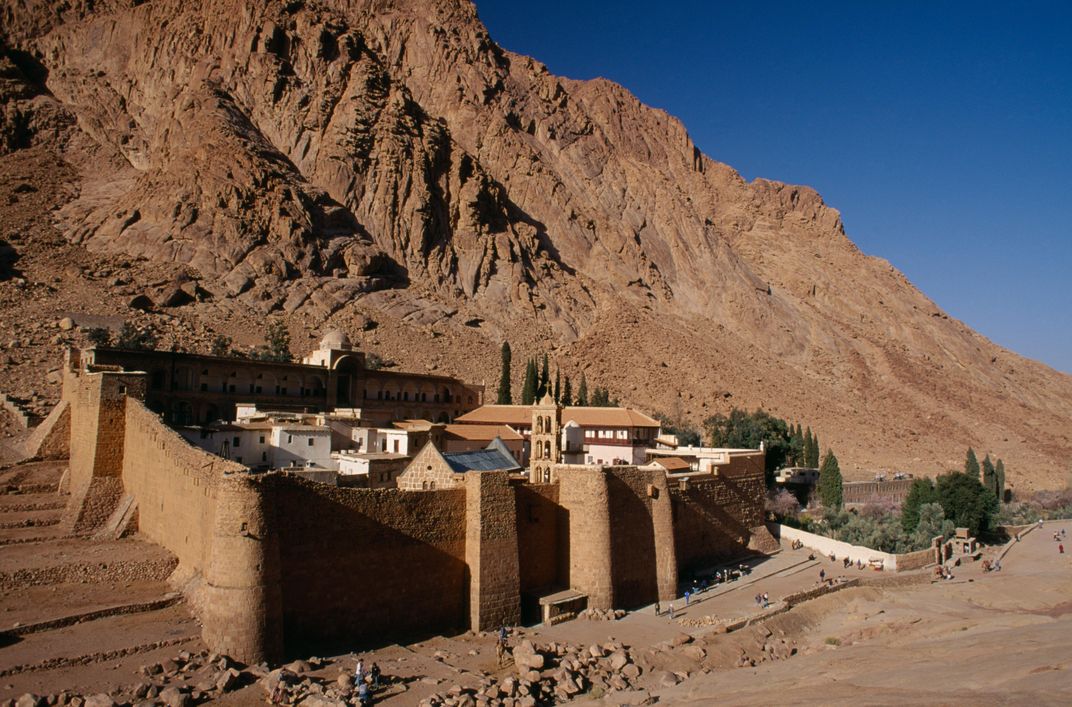
And the sheer variety of languages uncovered was entirely unexpected. Some of the texts are even helping to reconstruct lost languages, including Caucasian Albanian, spoken in an ancient kingdom in present-day Azerbaijan, and Christian Palestinian Aramaic, used by Christians in Palestine until the 13th century.
Researchers also discovered several Greek texts translated into Syriac, which was first spoken by Syrian Christians before becoming a major literary language throughout the Middle East. We already know that in the eighth and ninth centuries, the Islamic caliphate, then based in Baghdad, sponsored a huge program to translate Greek classical knowledge through Syriac into Arabic (a project that helped save much of classical Western knowledge during the Dark Ages). These Syriac undertexts show that Christian scholars at St. Catherine’s were a part of this effort. “We can see this great translation movement in process,” Phelps says.
Each surprise adds a piece to the puzzle. The discovery of two unknown Christian texts in the ancient language of Ge’ez suggests that Ethiopian monks, who were not thought to have had much contact with Sinai in antiquity, may once have practiced at the monastery. And one palimpsest, which Michelle Brown, a former curator at the British Library in London, describes as a “Sinai sandwich,” is remarkable for the relationship it suggests between four different layers of text. Its oldest layer was written in Greek, at St. Catherine’s. Next is an undertext in a Latin script used in Italy at the turn of the seventh century, then an eighth-century Latin insular script, a style of writing pioneered by monks in Ireland that flourished in the British Isles. The top layer is an Arabic script written at St. Catherine’s around the turn of the tenth century.
This is a real breakthrough—a “smoking gun,” Brown says. Scholars have assumed that there was little contact between the Middle East and the West in the Middle Ages, before the Crusades, but Brown suspected from what she could already make out of the palimpsest and other fragments at St. Catherine’s that this view was wrong. The layering of these scripts revealed by the new imaging supports her hunch. It’s exceedingly unlikely that the pages were carried from Sinai to Rome, to Britain, and then back again. Instead, she says, monks from these distinct Western communities must have been working at St. Catherine’s over the centuries.
Put all of that together, and our view of this humble outpost is transformed. We might think of the Sinai Desert merely as a remote wilderness where the Jews wandered for decades after their escape from Egyptian slavery. But the diverse findings of the palimpsests project offer stunning testimony to St. Catherine’s role as a vibrant cosmopolitan center and a key player in the cultural history of East and West, where people of different languages and communities met and exchanged practices and intellectual traditions. “It is a place where people made the effort to travel to,” says Rapp. “And they came from all over the world.”
**********
For Father Justin, the project represents a remarkable opportunity to extend what he calls a “living tradition” at St. Catherine’s, in which each manuscript is not only a holy object but a tangible witness to visitors from the remote past. For centuries, the monastery’s walls protected these manuscripts, but the political situation outside remains turbulent; last spring, militants allied with ISIS killed a policeman a few hundred yards from its gates. Although Father Justin insists this danger isn’t representative, he hopes the imaging project will help to protect the manuscripts’ treasures for centuries to come: “That is our obligation and our challenge today.”
/https://tf-cmsv2-smithsonianmag-media.s3.amazonaws.com/accounts/headshot/Jo.png)
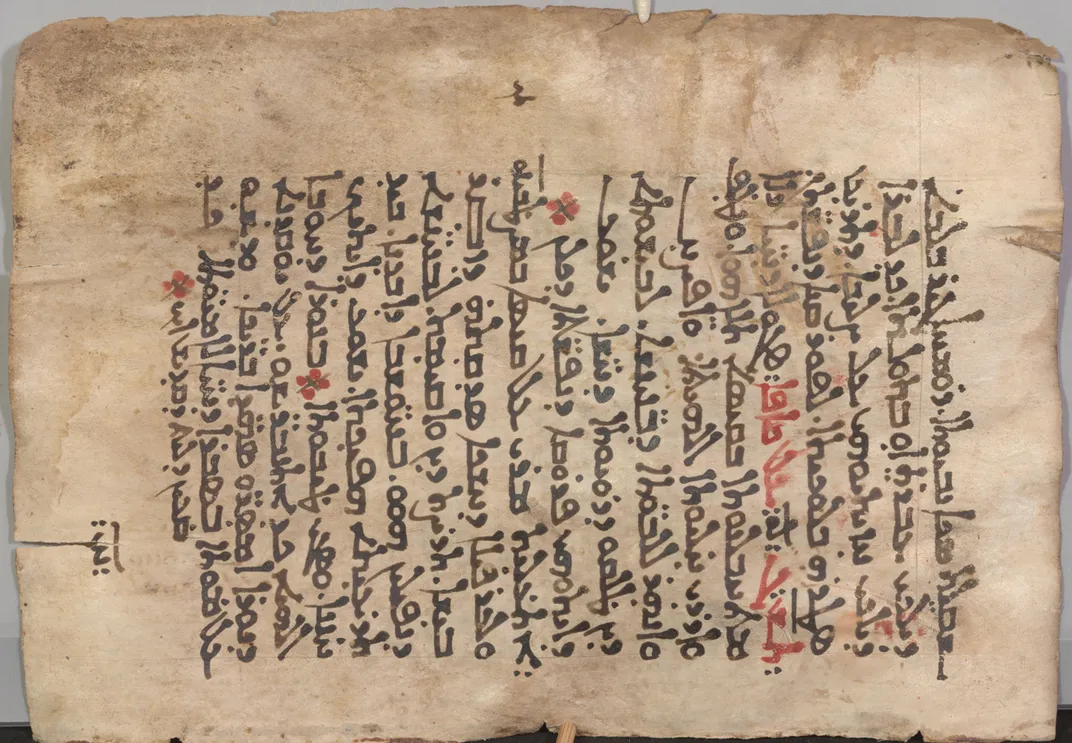
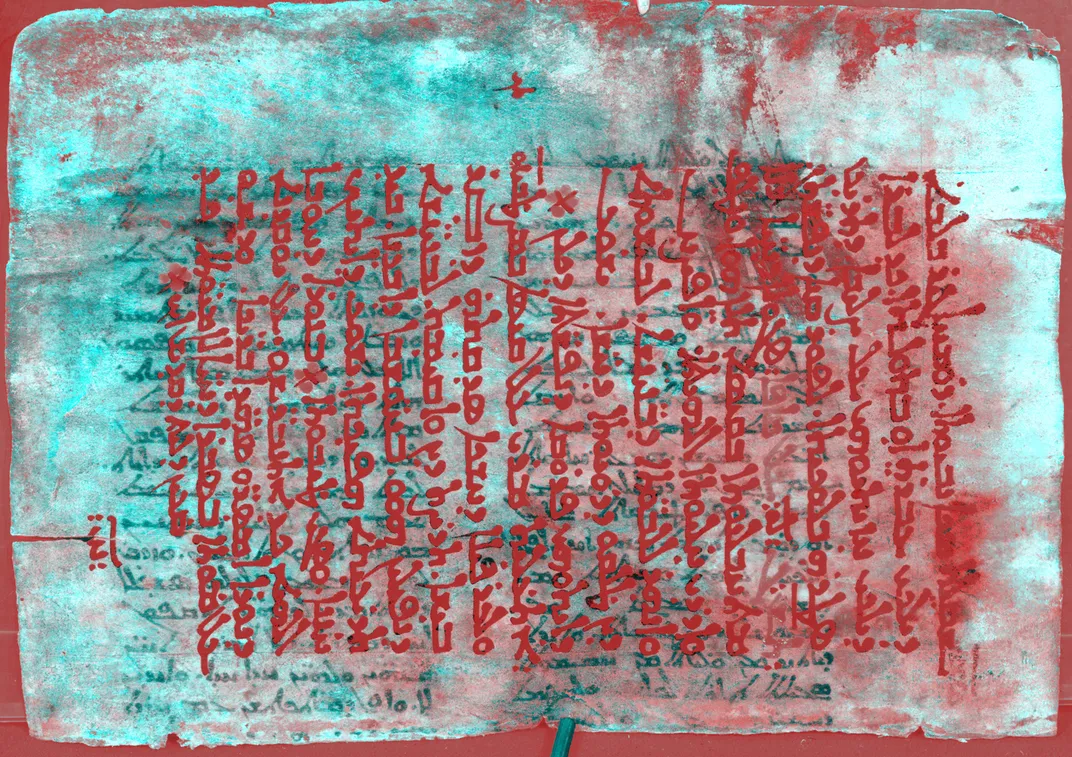
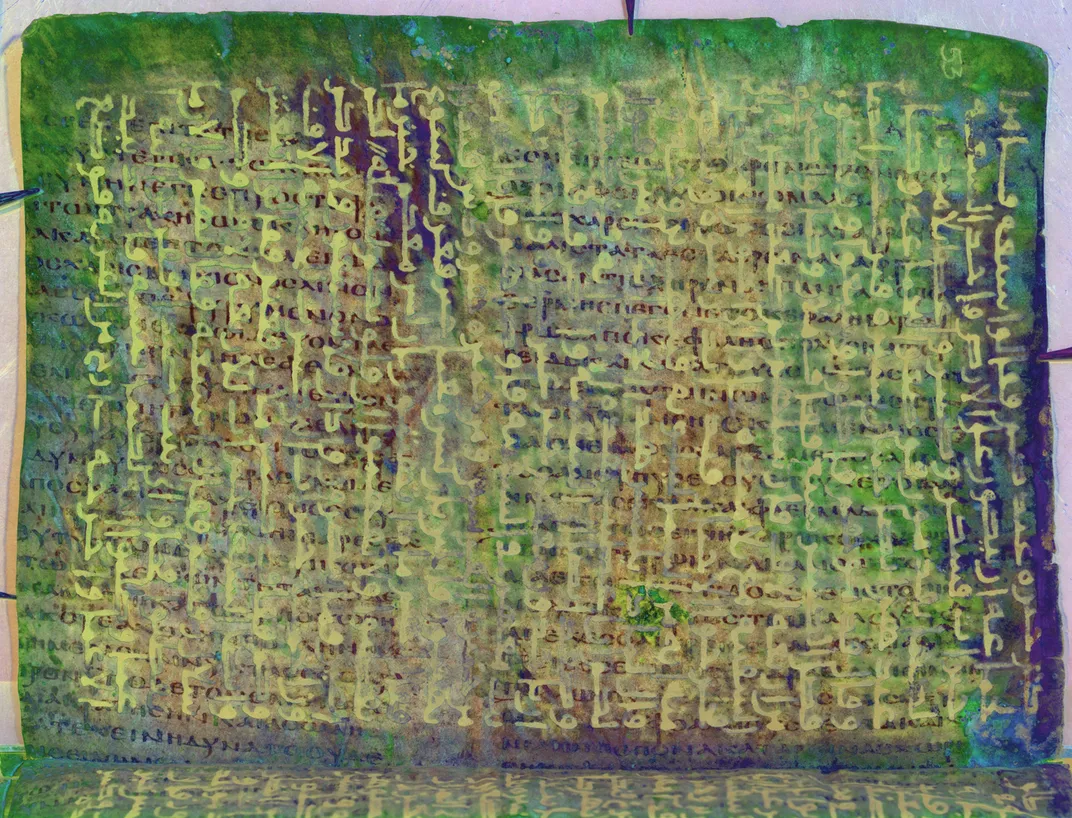
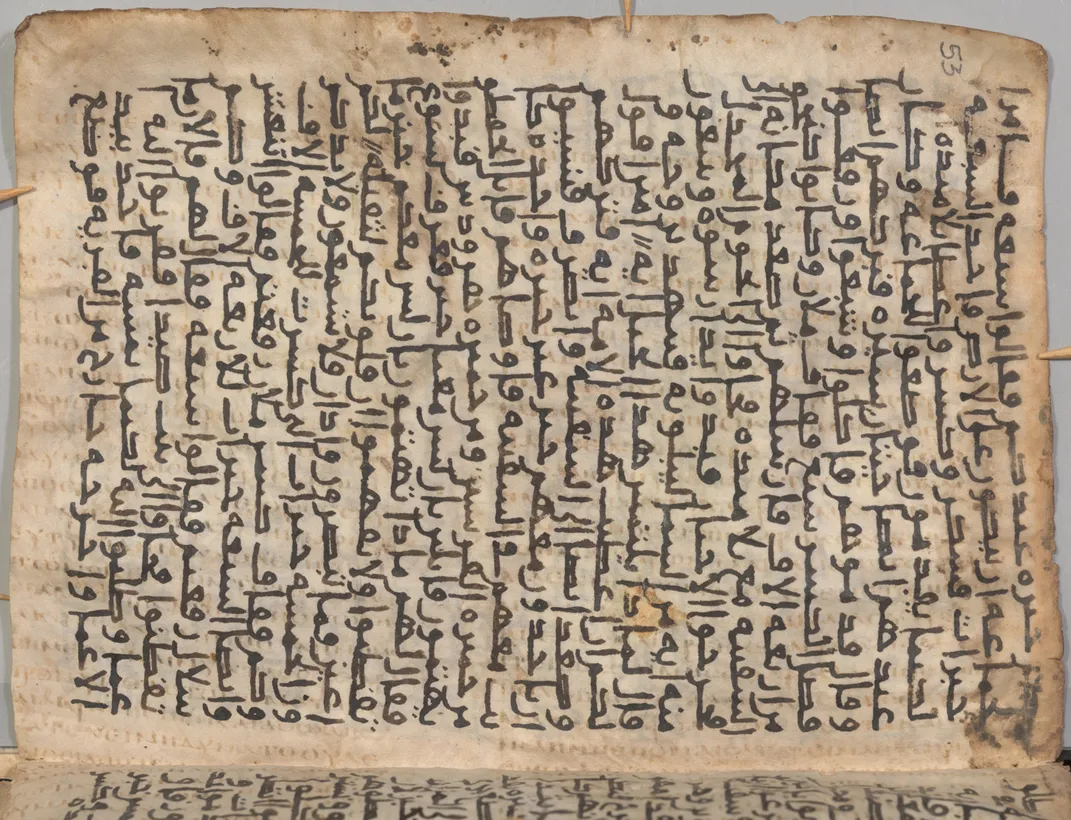
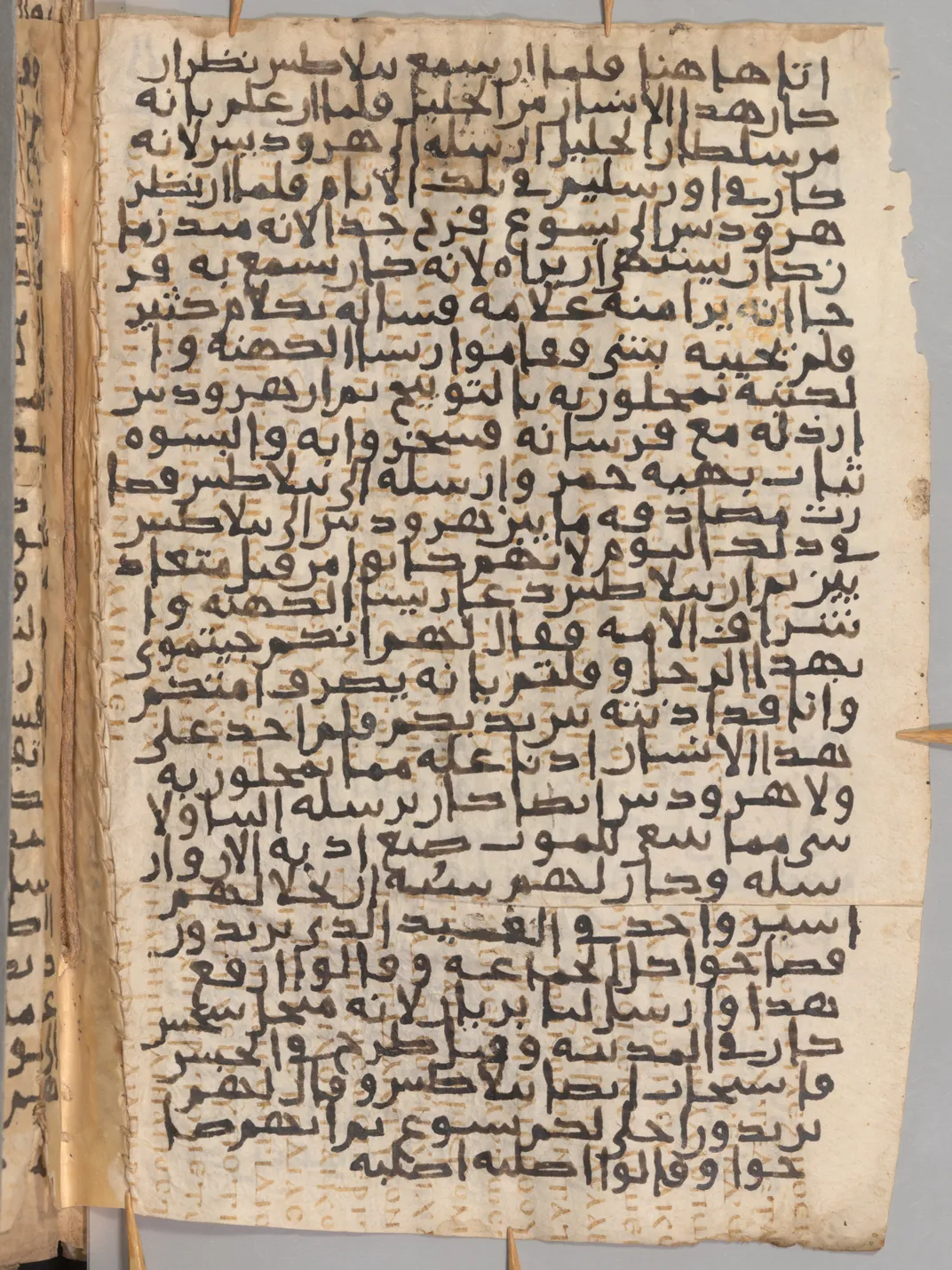
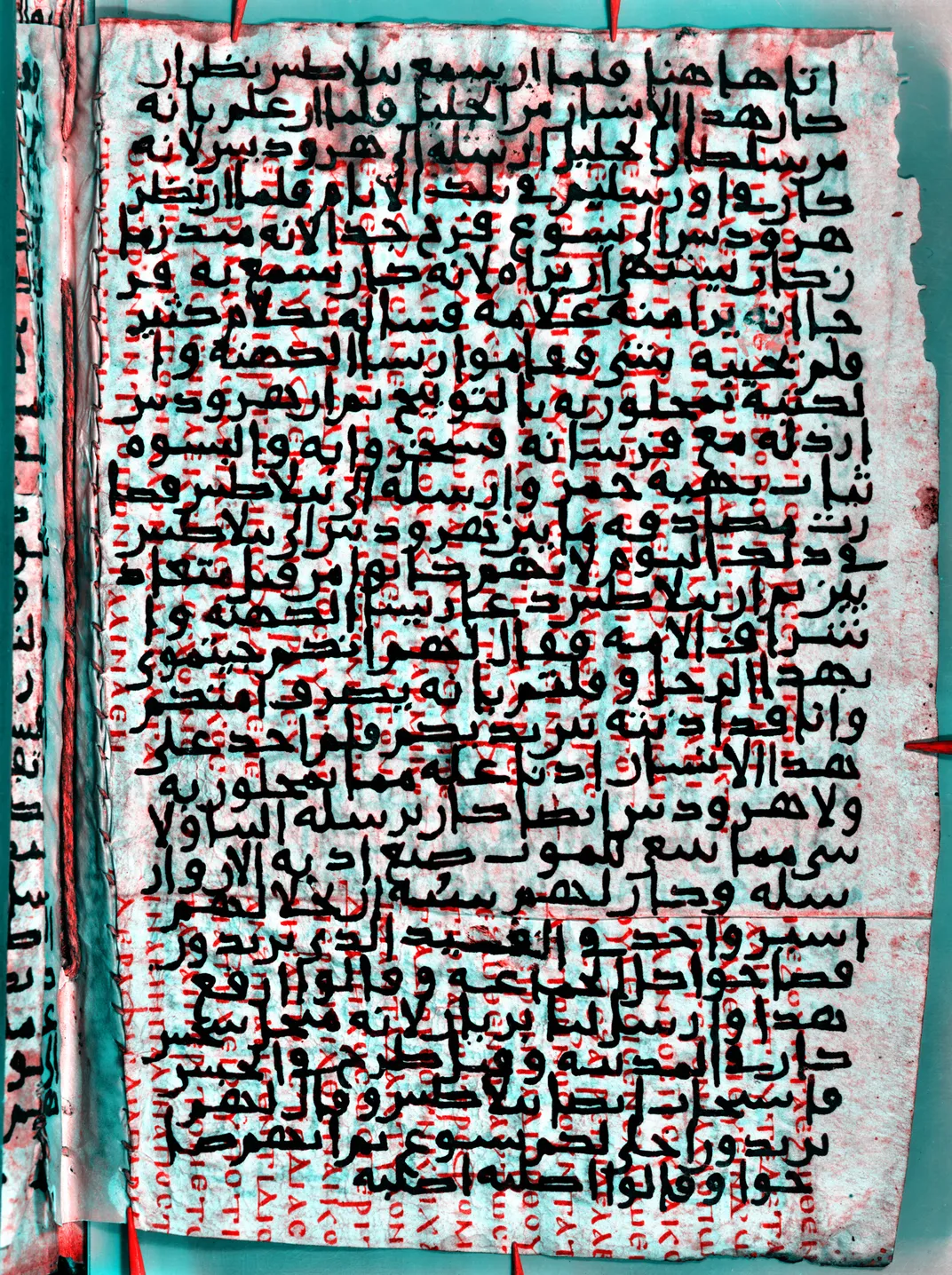
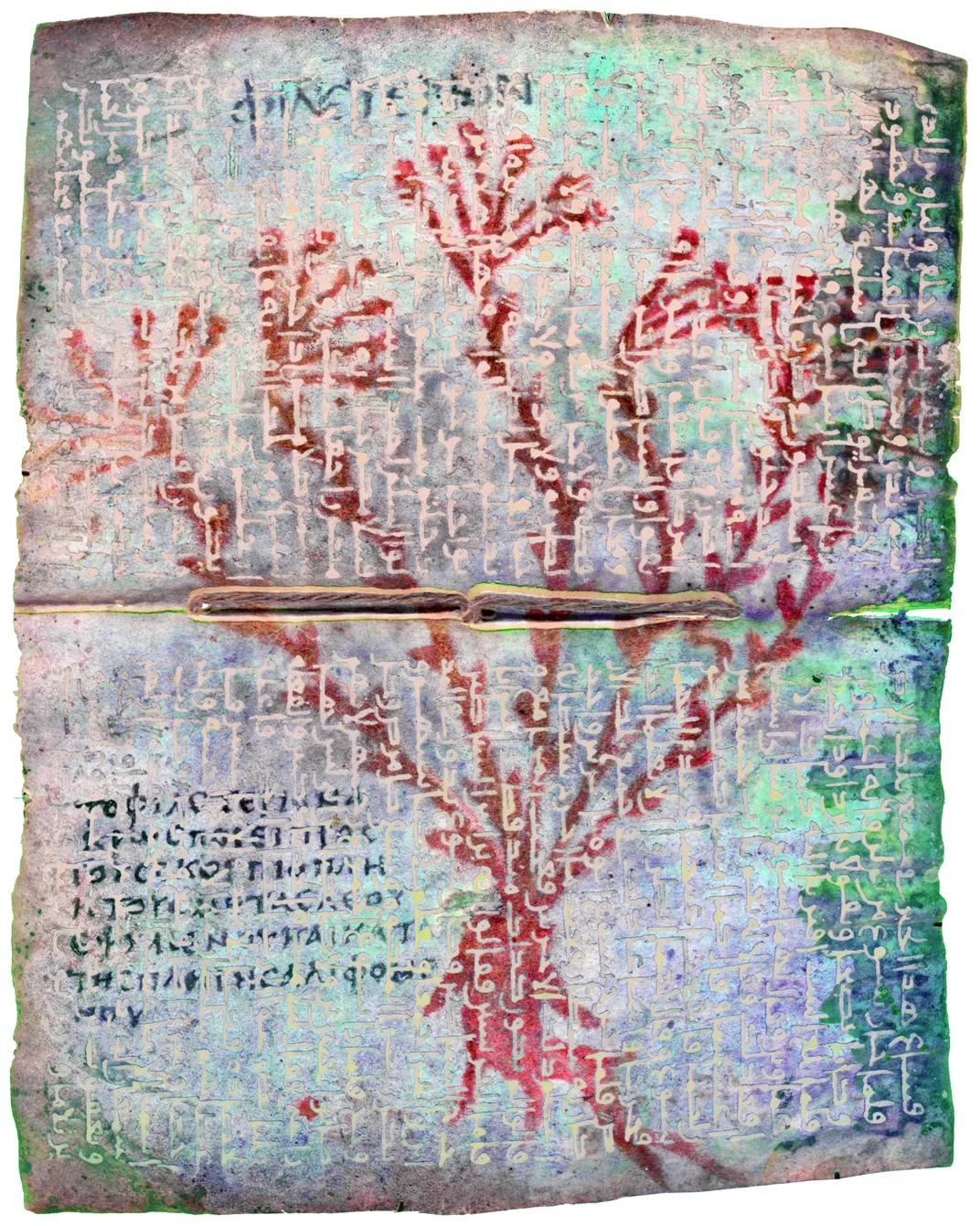
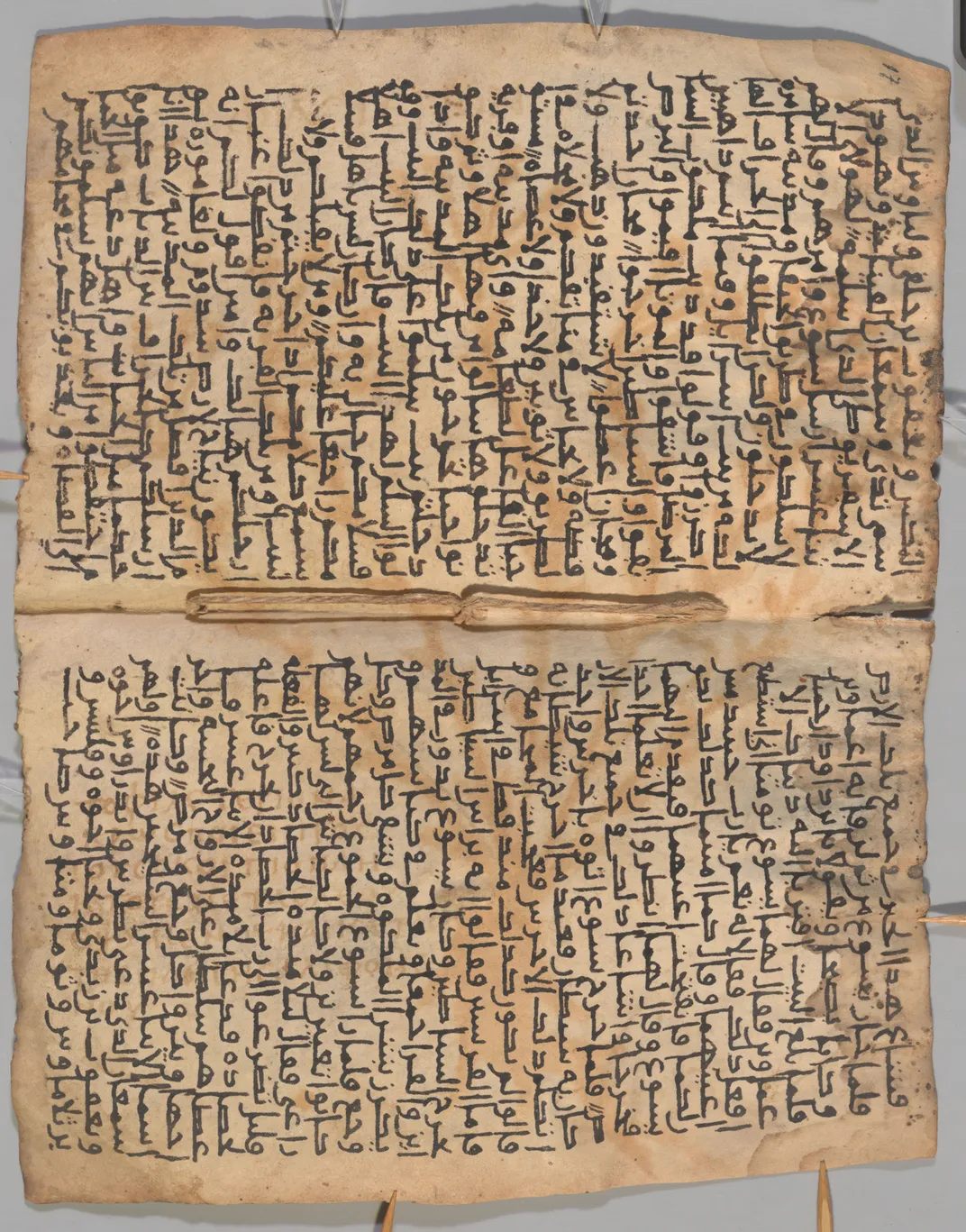
/https://tf-cmsv2-smithsonianmag-media.s3.amazonaws.com/accounts/headshot/Jo.png)